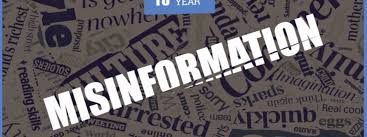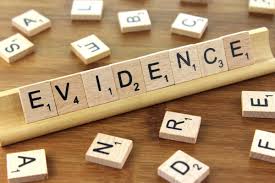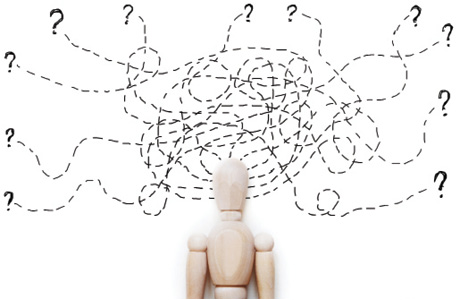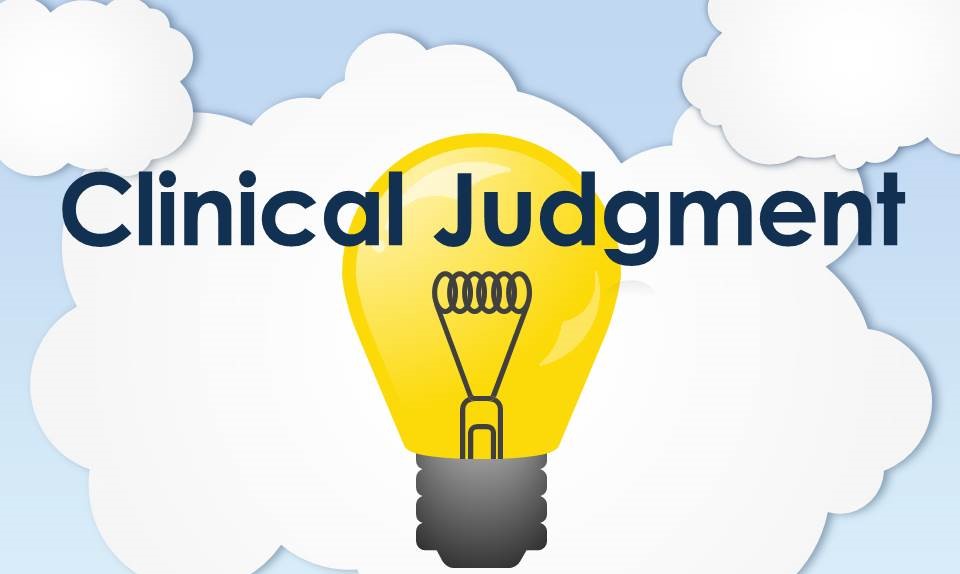There is no doubt that in the difficult context of child custody battles, parents occasionally resort to outrageous acts of interpersonal sabotage. [i] Every experienced family court judge, battle worn child custody practitioner, and family therapist can attest to dozens of examples of parental manipulation. Casebooks are filled with tales of vengeful and deceptive behavior by divorcing spouses, in which the children are used as pawns in their battles. [ii] Psychlaw.net uses parental alienation (PA) for the condition of children who have been alienated from a previously beloved parent; we use alienating behaviors (ABs) for the manipulation and alienating activities of parents, as a well as the ill-considered actions of those who assist them — be it witting or unwitting.
Those alienating behaviors are described in Dr. Amy Baker’s research as the 17 strategies of alienating parents. In this blog series, Psychlaw.net will examine each strategy and describe how courts throughout the United States have handled alienators who use this strategy. These 17 strategies include:
- BADMOUTHING: Alienating Parent (AP) uses verbal and non-verbal communications that convey to the child that the targeted parent (TP) is unloving, unsafe, and unavailable. Existing flaws are exaggerated, and non-existent flaws are manufactured. Statements are made frequently, intensely, with great sincerity, and unbalanced by anything positive.
- LIMITING CONTACT: The AP violates parenting plans and/or takes advantage of ambiguities in the plan to maximize time with the child. The TP has fewer opportunities to counter the badmouthing message, leading to the attenuation of the parent-child relationship. The child acclimates to spending less time with the TP and the court might even reward the AP by instituting the new “status quo” as the permanent schedule.
- INTERFERING WITH COMMUNICATION: The AP demands constant access to the child when the child is with the TP but does not reciprocate when the child is with him/her. Phones are not answered, e-mail messages are blocked, and messages are not forwarded. The TP has fewer opportunities to be a part of the child’s daily world and share with the child the small moments that make up a child’s life.
- INTERFERING WITH SYMBOLIC COMMUNICATION: Thinking about, talking about, and looking at pictures of a parent while away can help a child feel close and connected to an absent parent. The AP creates an environment in which the child does not feel free to engage in these activities with respect to the TP. Alienating parents, however, are able to make their presence felt to the child even when the child is with the TP. The child is preoccupied with thoughts of the AP, making frequent calls to check in, following rules imposed by the AP, worrying that the AP will be upset or angry. The child’s mind and heart are preoccupied with the AP and there is no room left for the child’s thoughts and feelings about the TP.
- WITHDRAWAL OF LOVE: APs make their approval of paramount importance to the child; so much so that the child would do anything to avoid the loss of love that is experienced when the child has disappointed or angered that parent. Typically what angers and hurts the AP most is the child’s love and affection for the TP. Thus, in order to secure the love of one parent, the child must relinquish the love of the other. Although this is not something likely to be explicit to the child, it will be apparent to the TP that the child lives in fear of losing the AP’s love and approval.
- TELLING THE CHILD THAT THE TP IS DANGEROUS: A particular form of badmouthing, this involves creating the impression in the child that the TP is or has been dangerous. Stories might be told about ways in which the TP has tried to harm the child, about which the child has no memory but will believe to be true nonetheless, especially if the story is told often enough.
- FORCING THE CHILD TO CHOOSE: The AP will exploit ambiguities in the parenting plan and create opportunities to seduce/compel the child away from the TP by scheduling competing activities and promising valued items and privileges. If both parents are present at the same event/location the child will favor the AP and ignore or be rude to the TP.
- TELLING THE CHILD THAT THE TP DOES NOT LOVE HIM OR HER: Another specific form of badmouthing occurs when the AP allows or encourages the child to conclude that the TP does not love him or her. The AP might make statements that conflate the end of the marriage with the end of the parent’s love of the child. (i.e. Mommy left us, or Daddy doesn’t love us anymore). The AP will foster the belief in the child that she is being rejected by the TP and distort every situation to make it appear as if that is the case.
- CONFIDING IN THE CHILD: The AP will involve the child in discussions about legal matters and share with the child personal and private information about the TP that the child has no need to know. The AP will portray him/herself as the victim of the TP, inducing the child to feel pity for and protective of the AP, and anger and hurt toward the TP. The confidences are shared in such a way as to flatter the child and appeal to his/her desire to be trusted and involved in adult matters.
- FORCING THE CHILD TO REJECT THE TP: APs create situations in which the child actively rejects the TP, such as call the TP to cancel upcoming parenting time or request that the TP not attend an important school or athletic event. Not only is the TP being denied something that s/he truly desires but s/he is being delivered the news by the child, leading to feelings of hurt and frustration. The TP may respond by lashing out at the child, further damaging their already fragile relationship. Further, once children have hurt a parent, the alienation will become entrenched as the child justifies his/her behavior by devaluing the TP.
- ASKING THE CHILD TO SPY ON THE TP: TPs usually have information in their files, desk, or computer that is of interest to the AP, such as paystubs, receipts, legal documents, medical reports, and so forth. An AP might suggest directly to a child or hint that the TP has information that s/he is not sharing with the AP. The AP will likely create the impetus in the child by linking the information to the child’s desires (i.e., if we knew whether Daddy got a raise we could ask for more money and buy a new dog for you). Once children betray a parent by spying on them, they will likely feel guilty and uncomfortable being around that parent, thus furthering the alienation.
- ASKING THE CHILD TO KEEP SECRETS FROM THE TP: The AP will ask or hint that certain information should be withheld from the TP in order to protect the child’s interests. Such as, “If Mommy knew that we were planning on taking a trip she would take me to court and try to stop it. Let’s not tell her until Saturday, when it will be too late for her to interfere.” Like spying, keeping secrets creates psychological distance between the TP and the child, who may feel guilty and uncomfortable with the TP. Obviously, when the TP discovers that the child withheld the information, the parent will be hurt and/or angry at the child
- REFERRING TO THE TP BY FIRST NAME: Rather than saying “Mommy/Daddy” or “Your Mommy/Your Daddy” the AP will use the first name of the TP when talking about that parent to the child. This may result in the child referring to the TP by first name as well. The message to the child is that the TP is no longer someone whom the AP respects as an authority figure for the child and no longer someone who has a special bond with the child. By referring to the TP by first name, the AP is demoting that parent to the level of a peer or neighbor.
- REFERRING TO A STEP-PARENT AS “MOM” OR “DAD” AND ENCOURAGING THE CHILD TO DO THE SAME: Once the AP is remarried, s/he will speak of the new partner as if that parent were the only mother/father of the child. This parent will be introduced to others (teachers, coaches, parents of friends) as the “mother/father” rather than as the step-parent. The AP will refer to that parent as the mother/father to the child and create the expectation that the child will do so as well. If the TP should find out that the child is doing this, s/he will be hurt and angry with the child.
- WITHHOLDING MEDICAL, ACADEMIC, AND OTHER IMPORTANT INFORMATION FROM THE TP/ KEEPING TP’S NAME OFF MEDICAL, ACADEMIC, AND OTHER RELEVANT DOCUMENTS: All important forms from school, sports, religious education, and so forth ask for the information about the child’s mother and father. The AP will not provide information about the TP in the appropriate place on the form and may not include the information at all. In this way, the TP will be at a decided disadvantage in terms of accessing information, forging relationships, being contacted in emergencies, being invited to participate, being provided with changes in schedules/locations, and so forth. Further, the AP will not provide the TP with schedules, reading lists, notices, and the like from the school, coach, doctor, and so forth. Taken together, these twin strategies marginalize the TP in the eyes of the child and important adults in his/her life. They also make it considerably more difficult for the TP to be an active and involved parent.
- CHANGING THE CHILD’S NAME TO REMOVE ASSOCIATION WITH THE TP: If the AP is the mother, she may revert to using her maiden name after the divorce and will institute a practice of using that name for her children as well. If the AP is the mother and she remarries, she will assume the surname of her new husband and will institute a practice of using that new surname for her children as well. If the AP is the father, he may start referring to the child with a new nickname (convincing the child that s/he has always been called by this name) and in this way forge a new identity for the child in which the AP is the most important parent. The TP may feel distant and awkward with the child who now refers to him or herself with a new name. The TP may feel that the name change represents a reaction of him/her and will experience hurt, sadness, and frustration because of that.
- CULTIVATING DEPENDENCY/UNDERMINING THE AUTHORITY OF THE TP: Alienated children often speak of the AP as if that parent were perfect, exceptional, and in every way above reproach. They also behave as if they are dependent on that parent in a way that is not necessary or appropriate given the age and life experience. APs are able to develop dependency in their children rather than (as is typical of non-alienating parents) help their children develop self-sufficiency, critical thinking, autonomy, and independence. At the same time, they will undermine the authority of the TP in order to ensure that the child is loyal to only one parent. Examples include instituting rules that the child must follow even when with the TP, and mocking or overwriting the rules of the TP. The AP becomes elevated in the eyes of the child while the TP becomes less important and less meaningful.
Loss of support, loss of companionship – how many target parents have complained of these very injuries? Finally, the intentionality of pathological alienating parents has been recognized in law and target parents have recovered for their injuries outside of family court. How many times do we hear about defamation and direct interference with custody and visitation? In these difficult casers, we hear these complaints all the time. Here we see that there is a forum to redress the injuries flowing from the awful behavior of alienating parents, even when the family courts are too timid to act.
Next week, Psychlaw.net will focus on badmouthing and what happens when courts find parents relentlessly badmouthing the other parent.
















